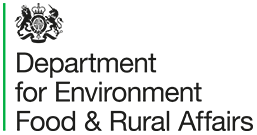Consultation on modernising environmental permitting for industry
Chapter 2: Agile standards - rapid, predictable and integrated standard setting
Once a technology or sector has become sufficiently developed, detailed sectoral pollution standards for all relevant industry (also referred to as BAT) need to be set and periodically updated. Having up to date standards is essential not only in minimising pollution and damage to the environment and public health, but in supporting industry investment, productivity and growth. Our current framework has strong foundations of transparency, proportionality and co-design and has significantly reduced pollution over the last 30 years. However, there are substantial issues that need to be addressed to improve the speed of standards-setting and deliver more effective and integrated pollution control.
Firstly, necessary technical updates to pollution standards are slow to address through central government and legislative systems and, where reviews take place, they generally take too long to develop, update and bring into effect. As set out in the ‘Case for Change’ chapter above, BAT for Part B sectors are often decades old, leaving industry with ill-fitting standards. In addition, the first tranche of UK BAT reviews (for Part A installations under the EPRs) has taken several years to develop and bring into effect. This is partly because the inherently technical and detailed nature of industrial standards means they are best determined by industrial and regulatory experts within a transparent framework and are arguably ill-suited to broader political and governmental processes. This means they are less likely to be prioritised or handled quickly enough to reflect the pace of change in industry.
Gaps in standards create uncertainty, delays and additional cost for business. Reform is therefore required to the standards-setting process to better enable growth by rapidly delivering clear, simple, adaptable requirements that minimise pollution. A more dynamic BAT system would enable prompt setting and updating of standards to reflect developments in technology and practice. This would speed up permitting and investment into innovation and decarbonisation, supporting the roll-out of established net zero and circular economy technologies. It would also ensure a better regulatory experience for industry and other stakeholders and deliver enhanced protections for public health and the environment sooner.
Secondly, the concept of integrated pollution control is central to the framework, meaning that emissions to air, land and water and wider environmental factors such as energy efficiency and resource efficiency, should all be considered at the same time to ensure that BAT standards represent the overall best environmental outcome. In practice, BAT has particularly focussed on the impacts of regulated sites on local communities and the local environment, however, there is an opportunity for greater consideration of environmental factors relevant to net zero and a circular economy to create a more fully integrated approach. In addition, there are types of activity under the EPRs, most notably Part B installations, which only have standards for emissions to air rather than integrated pollution control, which adds complexity to regulation and leaves some pollution unchecked.
Policy proposals relating to more fully integrated pollution control are set out below, however we are already taking action using powers under the current framework. For example, when setting BAT there are often trade-offs at the level of particular techniques and technologies between reducing pollution and other important environmental factors, for example, water use, waste generation, resource efficiency, energy efficiency, noise and odour. Industry has raised concerns that this can lead to perverse impacts, for example by BAT reducing pollutants such as volatile organic compounds (VOCs) as low as possible at the expense of creating other pollutants such as carbon dioxide (CO2) if flue gases are heat treated. While in practice individual sites can seek derogations to avoid such unintended consequences, this situation doesn’t reflect properly integrated pollution control, lacks clarity and places unnecessary burdens on industry. The commissioning letter for UK BAT Tranche 2 by the Standards Council set out that greenhouse gases (GHG) and circular economy impacts should be thoroughly considered throughout the process. However, there are currently limited tools for making accurate judgements of impacts and benefits between different methods for controlling different pollutants and for comparing the impact of pollution to air versus pollution to land or water. We will work with regulators and the devolved governments to improve methodologies for analysing and quantifying the impacts of different pollutants, which can be used in the BAT process and for decisions on derogations in permits.
The industrial emissions permitting regime can already control emissions of low-volume, high-concern pollutants such as per- and polyfluoroalkyl substances (PFAS), regardless of whether they are subject to restrictions under chemicals regulatory regimes. Defra is working with the EA to ensure these pollutants are adequately addressed in industrial permitting. Through UK BAT Tranche 2, Defra and the devolved governments have ensured that low-volume, high-concern pollutants within each sector, such as PFAS, are considered in detail. Alongside this, the EA is carrying out an ongoing risk screening project to identify priority sites and pollutants of concern. Once priority sites and pollutants have been identified, the EA may require increased evidence gathering, monitoring, or emissions limits at this site. Finally, Defra will work with the EA and devolved governments to explore the development of GET-style guidance on the management of PFAS across relevant industries. This could include information on upcoming requirements, for example, the requirement to use specific PFAS abatement techniques, guidance on disposal routes, and other relevant information.
